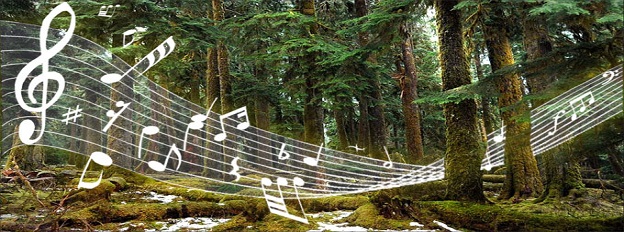- 19 Apr, 2020
Wood often used in acoustics either to increase the sound tonality or to lower it.
The natural acoustic properties of wood control excessive echo, or reverb, reducing the transmission of sound vibrations. For this reason, many public buildings equipped with wooden panels such as walls and ceilings.
Therefore, plywood and wood fiber acoustic products are used in theaters and cinemas. Wood acoustic cladding has holes or slots to create resonance in the tile. It helps to absorb a sound on the mid-range frequencies, breaking the energy of the sound wave. As a result, it reduces the echo.
It well know that wood conducts sound better than air. On average, the speed of sound in wood along the fibers is 5000 m / s. In the plane across the fibers, the speed of sound is about 3-4 times less. With increasing humidity and wood temperature, the speed of sound propagation decreases. The speed of sound in air is 330 m / s.
An important characteristic of wood in assessing its ability to reflect and conduct sound is acoustic resistance.
SOUND REFLECTION
Did you know, if you close the wooden door to the room, than the conversation from the corridor or from stairs will drown?
1. If a sound wave in the air reaches a thick solid object or on the surface of deep water, then a portion of the wave will attempt to pass (sound transmission) through the object and the balance of the sound is reflected (sound reflection).
2. Reflection of sound waves occurs in accordance with the basic law of reflection of waves: the angle of incidence is equal to the angle of reflection.
The speed of sound in solids is greater than in liquids and gases.
For example, thereby, people who have lost their hearing are sometimes able to dance to music that reaches their auditory nerves not through the air and outer ear, but through the floor and bones.
It is not rare to see a strange at first glance picture: the driver, taking a wooden stick, puts one end to different parts of the motor, and the other end to the ear, and sometimes takes this stick even in the teeth. Using the good sound conductivity of the tree, he listens to the noise of moving parts inside the machine and determines whether they work well.
Good soundproofing are porous heterogeneous materials. Wood is one of the best natural sound insulators that has these two qualities. Sound insulators can also be good temperature insulators.
As established by studies, the best acoustic properties in terms of the greatest sound emission are spruce, fir and cedar wood. These species used to make many musical instruments: plucked, bowed, keyboard, etc. As practice has shown, long-exposure wood has the best acoustic properties – for 50 years or more.

